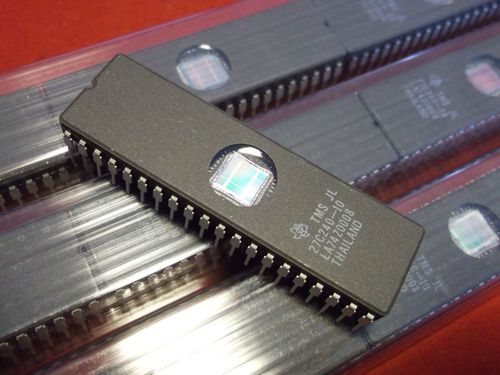Time: 2024-10-14 16:53:27View:
EPROMs, or Erasable Programmable Read-Only Memory, are a type of non-volatile memory used in computing and electronics. Unlike traditional ROM, EPROMs can be reprogrammed and erased multiple times, making them highly versatile for development and testing environments. This article dives into the working principles, applications, and unique advantages of EPROMs, providing a detailed understanding for those curious about how these chips function and where they're used.
EPROM stands for Erasable Programmable Read-Only Memory. It is a memory chip that can retain data even when power is removed. Unlike other types of ROM, EPROM can be erased by exposing it to strong ultraviolet (UV) light, allowing it to be reprogrammed afterward. This feature made EPROM a popular choice during the 1980s and early 1990s for prototyping and firmware development.
EPROM chips have a distinctive appearance, usually featuring a quartz window that allows UV light to erase the stored data. Once erased, the memory can be reprogrammed using a specialized device called a programmer. This capability allowed engineers to make updates and modifications to software during the development process without having to replace the entire chip.

At a fundamental level, an EPROM consists of an array of transistors that store data. Each transistor is connected to a floating gate, which acts like an isolated electron storage node. When the chip is programmed, electrons are injected onto the floating gate using high voltage, representing the data bit. To erase the data, UV light discharges the electrons, resetting the memory to its initial state.
The process of programming an EPROM is non-destructive, meaning data can be added to the chip multiple times, but erasing it requires exposure to UV light. This is different from modern memory technologies like flash memory, which support electrical erasure, making EPROM somewhat more cumbersome to work with in comparison.
EPROM chips have been used extensively in various industries, particularly when product development cycles were longer, and reprogrammable memory was not as advanced as it is today. Here are some key applications:
Firmware Development: EPROMs were used in prototyping and software development for embedded systems. During the 1980s, it allowed developers to iteratively refine firmware by erasing and reprogramming the chip, which was particularly important for early computers, printers, and industrial machinery.
Embedded Systems: In the early stages of embedded systems, EPROMs were commonly used to store bootloader software or operating instructions, providing stable, non-volatile storage that could still be updated during testing.
Microcontroller Programming: Many microcontrollers, especially early designs, utilized EPROMs for storing software. This was a reliable way to test programs before they were permanently manufactured.
EPROM chips had several benefits that made them ideal for their time, but they also came with limitations:
Advantages: The reprogrammable nature of EPROM made it much more cost-effective compared to traditional ROM, especially during iterative design and development phases. Its non-volatile properties allowed data to be stored long-term without power.
Limitations: The primary disadvantage of EPROMs is the cumbersome erasing process involving UV light exposure. This required specialized equipment and took more time compared to modern electrical erasure techniques used by EEPROM and flash memory.
As memory technology advanced, EPROM began to be replaced by more convenient types of memory such as EEPROM (Electrically Erasable Programmable Read-Only Memory) and flash memory. These newer forms of non-volatile memory allow for electrical erasure and programming, making them much easier to use in applications where frequent updates are required.
However, understanding EPROMs remains essential for gaining insights into the evolution of semiconductor memory technology. EPROM's concept of a floating gate structure laid foundational groundwork for the development of today’s flash memory, which powers USB drives, solid-state drives, and even mobile devices.
EPROMs played an instrumental role in the history of computer memory technology. While largely obsolete in today’s products, their influence on modern non-volatile memory cannot be understated. They provided a flexible and reusable way to develop and test software in embedded systems during a time when reprogrammable memory options were limited. As technology advanced, EPROM gave way to newer, more practical memory solutions, yet its legacy remains a key part of computing history.
Whether you’re delving into vintage computing or seeking to understand the roots of current memory technologies, EPROMs offer a fascinating glimpse into the evolution of programmable memory. Their simplicity and the innovation they inspired serve as a bridge from the early days of electronics to the more sophisticated devices we use today.